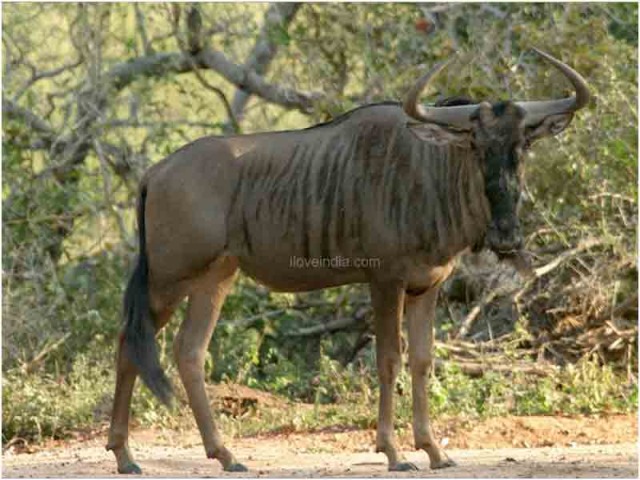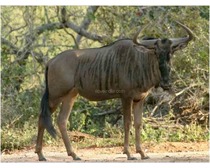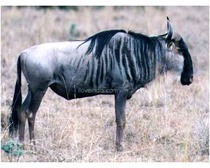There are many fascinating facts about the mammal gnu, found in different zones of Africa, worth knowing. Read on to explore the most interesting facts and amazing information on wildebeest.
Facts About Gnu
Gnu, or the wildebeest, is an ungulate mammal that belongs to the family Bovidae and the genus Connochaetes. There are two species of the animal found worldwide: the Blue Wildebeest or the brindled gnu (C. taurinus) and the Black Wildebeest or the white tailed gnu (C. gnou). Both of them are native to Africa and are close kins with cattle, antelopes and goats. Apart from the open woodlands and plains in parts of Africa, the Masai Mara Game Reserve in Kenya and the Serengeti National Park, a UNESCO World Heritage Site in Tanzania houses a considerable number of these animals. Gnu are very active animals and can be found grazing day and night. They breed mostly during the rainy season, especially in the months of February and March. Around 500,000 calves (around 80% of the breeding population) are born every year. Read on to explore more interesting facts and amazing information on gnu.

Facts About Gnu
Kingdom: Animalia
Phylum: Chordata
Subphylum: Vertebrata
Class: Mammalia
Order: Artiodactyla
Family: Bovidae
Subfamily: Bovinae
Genus: Connochaetes
Species: 2 species; Connochaetes gnou, Connochaetes taurinus
Height: 3 ft 9 inch to 4 ft 7 inch (1.1 m to 1.4 m)
Weight: 330 to 550 lbs (150 to 250 kg)
Life Span: Up to 20 years in captivity
Diet: Herbivore; generally prefers short grasses, but will eat taller grasses in the dry season
Range: Kenya and Tanzania in Eastern Africa
Habitat: Grasslands
Age of Sexual Maturity: Males - 3 to 4 years; Females - 2.5 years
Gestation Period: 240 to 255 days
Number of Offspring: One to two
Interesting & Amazing Information On Wildebeest
- At present, the population of white bearded gnu has increased from around 100,000 animals in 1950 to a massive 1.5 million.
- Gnu calves can stand and run within 3 to 7 minutes of being born.
- A major portion (around 80%) of gnu calves are born within a period of about 2 to 3 weeks towards the start of the monsoon season.
- Every year, the white-bearded wildebeest migrate, looking for water and fresh pastures, in a group of about one million individuals. It is really a spectacle to see this amazing single annual movement of wildlife.
- The annual migration of gnu takes place in the form of long columns that stretch for thousands of miles. Those who get to see this unique sight often say that the ground trembles under the impact of their stampeding hooves.
- The grazing and trampling of grasses by these animals, during their annual migration, has a beneficial effect. Rather than damaging the area over which the migration occurs, it helps stimulate grass growth.
- These animals live in one of the most densely packed herds, among the mammals.
- During night time, gnu sleep in rows on the ground. This way, they not only get the required security of being in a group, but also allow space to run in times of emergency.
- At night, these animals take turns in sleeping. While others sleep, a few of them stand guard to protect their herd from attacks by any predator.
- The large head, shaggy mane, pointed beard and sharp horns of a gnu gives it a rather menacing appearance, the reason why the Afrikaans name ‘wildebeest’ or ‘wild beast’ was coined.


See also
More from iloveindia.com
- Home Remedies | Ayurveda | Vastu | Yoga | Feng Shui | Tattoos | Fitness | Garden | Nutrition | Parenting | Bikes | Cars | Baby Care | Indian Weddings | Festivals | Party ideas | Horoscope 2015 | Pets | Finance | Figures of Speech | Hotels in India : Delhi | Hyderabad | Chennai | Mumbai | Kolkata | Bangalore | Ahmedabad | Jaipur
- Contact Us Careers Disclaimer Privacy Policy Advertise With Us Lifestyle Sitemap Copyright iloveindia.com. All Rights Reserved.




